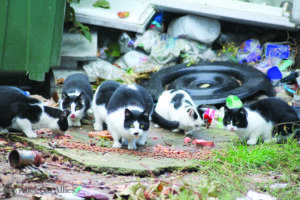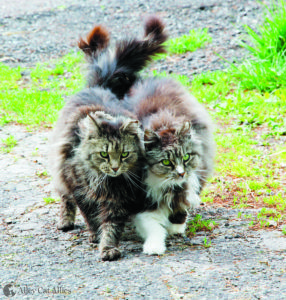Buckle up! To celebrate Global Cat Day®, we’re taking you on a trip around the world for a glimpse into how other countries are increasingly turning to non-lethal, humane approaches to save cats, including Trap-Neuter-Return (TNR).
In the United Kingdom, model-turned-animal activist Celia Hammond, an influential early TNR advocate, remains at the forefront of the movement. Her group, the Celia Hammond Animal Trust, helps some 2,000 cats per year with TNR and low-cost spay and neuter in London and southern England.
The city of London also supports and educates citizens about TNR. “There used to be no concept of dealing with feral cats (also called community cats) in any other way than killing them,” says Hammond. “TNR is now widely accepted by most people and charities. We’ve seen such a welcome change in attitude.”
In Istanbul, Turkey, community cats can be found on street corners and in shop doorways. Hilary Sable, founder of Cihangir Cool for Cats, an Alley Cat Allies Feral Friends Networkâ„¢ member, says the group practices TNR for nearly 50 cats a week and educates residents about its benefits. “We put up posters in English and Turkish and facilitate school trips to teach kids the best ways to help,” she says. “We’re seeing [views] change about TNR and fewer kittens born.”

Community cats in the U.K. enjoy a meal. They were helped through the Celia Hammond Animal Trust’s TNR program.
In the Philippines, Compassion and Responsibility for Animals (CARA) Welfare, another Feral Friends Networkâ„¢ member, has carried out TNR on some 700 cats in 2018. CARA also works to establish TNR programs in every village it helps. “Overall, the awareness of TNR has grown by leaps and bounds,” says Veronica Lim, head of CARA’s TNR Program.
TNR is also growing in Panama, where Feral Friends Network member Spay Panama has sterilized more than 79,000 cats since 2001half of those were community cats who went through their TNR program.”More people have become aware of TNR as the humane and effective method for cat colonies,” says Patricia Chan, the founder and director. “Businesses and people see that cat colonies stabilize because of TNR.”


